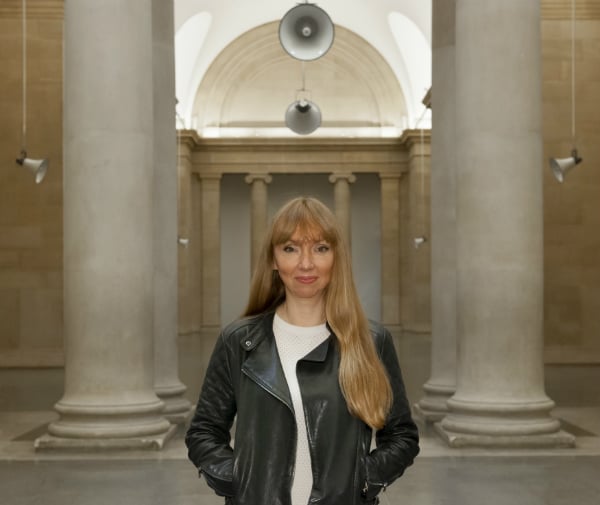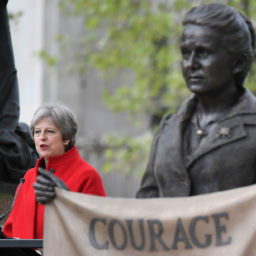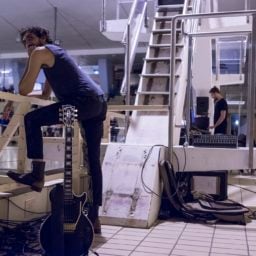The 64-meter arched hallway of Tate Britain’s Duveen Galleries is empty. It is a moment before one notices the 14 tannoy speakers dotted up above, one at each end of the great corridor and others placed precisely at intervals. The great, gaping space of the gallery is underwhelming. Yet while standing, lonely as someone who got to an epic party a day late, there comes the interruption of a series of searing, sometimes sonorous, at times rattling, often off-key notes. The sudden music arrives startlingly, raspingly through the megaphones above.
This is Turner Prize-winner Susan Philipsz’s War Damaged Musical Instruments, a sound installation to mark the centenary of the First World War commissioned by 14-18 Now which, as the title suggests, takes a selection of wind and brass instruments that have been twisted, flattened, shot at, broken and sunk beneath the ocean during the wars of the past 200 years. They are British and German instruments carefully tracked down by the artist and borrowed from institutions in both countries.
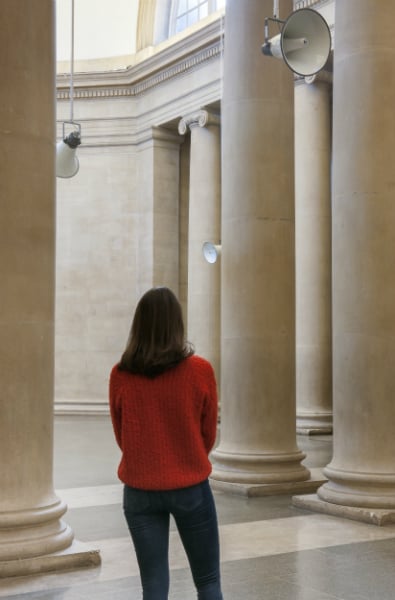
Installation view of War Damaged Musical Instruments by Susan Philipsz at Tate Britain
Photo: ©Susan Philipsz, courtesy of J. Fernandes, Tate Photography
But these instruments of war belonging to one-time enemies are now playing in a kind of harmony, never mind the handicaps of their condition. Together they sound the bars of The Last Post, a piece of music which in Britain is synonymous with military funerals and Remembrance Sunday. The composition by Alwyn W Turner is comprised of several calls used in the military to signal a soldier’s retreat from battle, but is now inescapably linked with death.
That recognizable refrain is made eerier by the discordant notes. The fact that the last time these instruments were played was by men who are long dead seems to hang in the air. At the far end of the Duveen there’s the breathy, unfocused parp of the Balaclava Bugle used, astonishingly enough, to sound the Charge of the Light Brigade in 1854 during the Crimean War; at the other end the oldest instrument included, a bugle found beside the body of a fourteen-year-old drummer boy after the Battle of Waterloo, sounds its sanguine salute; the most modern pieces are a bugle and two flutes recovered from the alte Münze Bunker in Berlin in 1945.
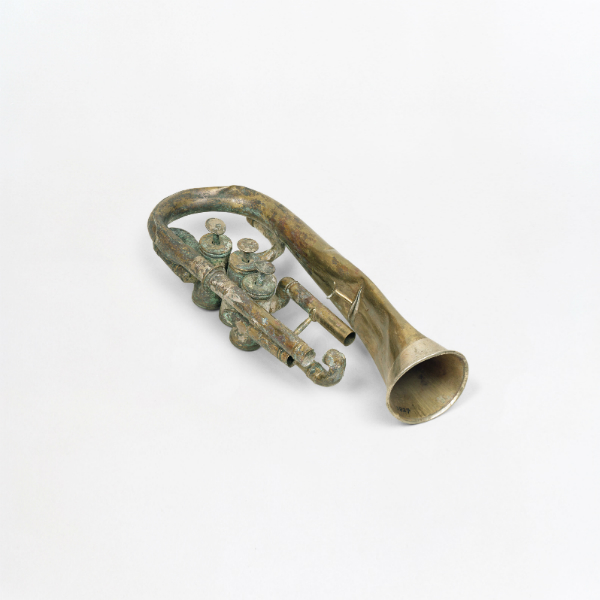
Horn (ruin), Salvaged from the alte Münze bunker, Berlin, 1945
Photo: Collection Musikinstrumenten-Museum Berlin
Each tannoy delivers its noise unexpectedly leaving you spinning on the spot, straining your ears to work out which direction the music is coming from. Individual bars hit you before overlaying each other to become a focused composition. There is the pip pip of a flugelhorn used by the German army in battle to summon the flanks of the army; and the dreamy, lowing of a Cavalry Trumpet salvaged from the wreck of the SS Pomeranian which, when brought to the surface was completely covered in barnacles, and still sounds like it is underwater.
A side room offers video of footage of Philipsz conducting professional musicians through the plangent notes of The Last Post on instruments that appear almost comically mangled. The natural artistry of an entirely crumpled flute, or an almost unplayable tuba that still has its military fringing intact, is breathtaking. The musicians quite literally breathing life into instruments long hidden away in museum drawers appear bewildered by their task. And the valiant effort with which these fresh-faced boys attempt it is striking for its poetic parallel with the original players who might well have been hit by the bullets that went through these instruments.
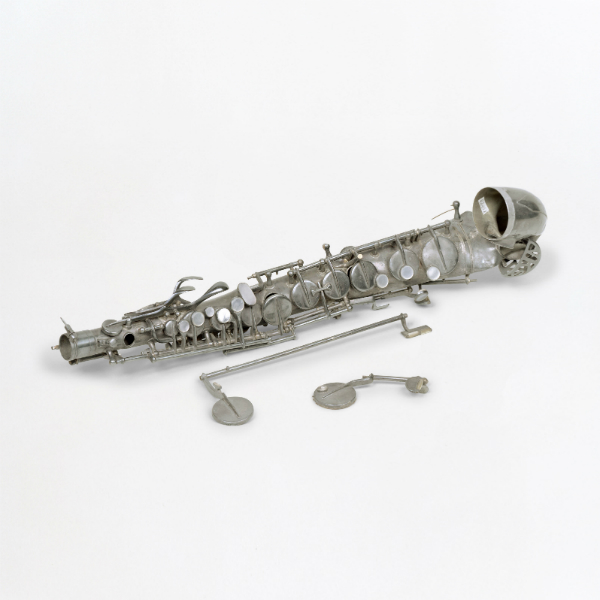
Alto Saxaphone (ruin) Brass silvered. Salvaged from the alte Münze bunker, Berlin, 1945
Photo: Collection Musikinstrumenten-Museum Berlin
The flame-haired Scottish artist was present at the press preview and explained that she chose brass and wind instruments because they rely on human breath to sound. “I am less interested in creating music than to see what sounds these instruments are still capable of, even if it is just the breath of the player,” she said.
Philipsz’s soundscapes are always haunting and evocative. Lowlands, an a cappella recording of her singing folk songs designed to be played under three bridges in her native Glasgow, won her the 2010 Turner Prize but suffered from criticism that it didn’t completely work in the hallowed corridors of Tate as the gentle singing was overcome by ambient noise. The same is not true of War Damaged Instruments which infuses the marble halls with echoing melancholy and contains a military forcefulness which is really very moving.
“Susan Philipsz: War Damaged Musical Instruments” is on view at Tate Britain from November 21, 2015 – April 3, 2016.
